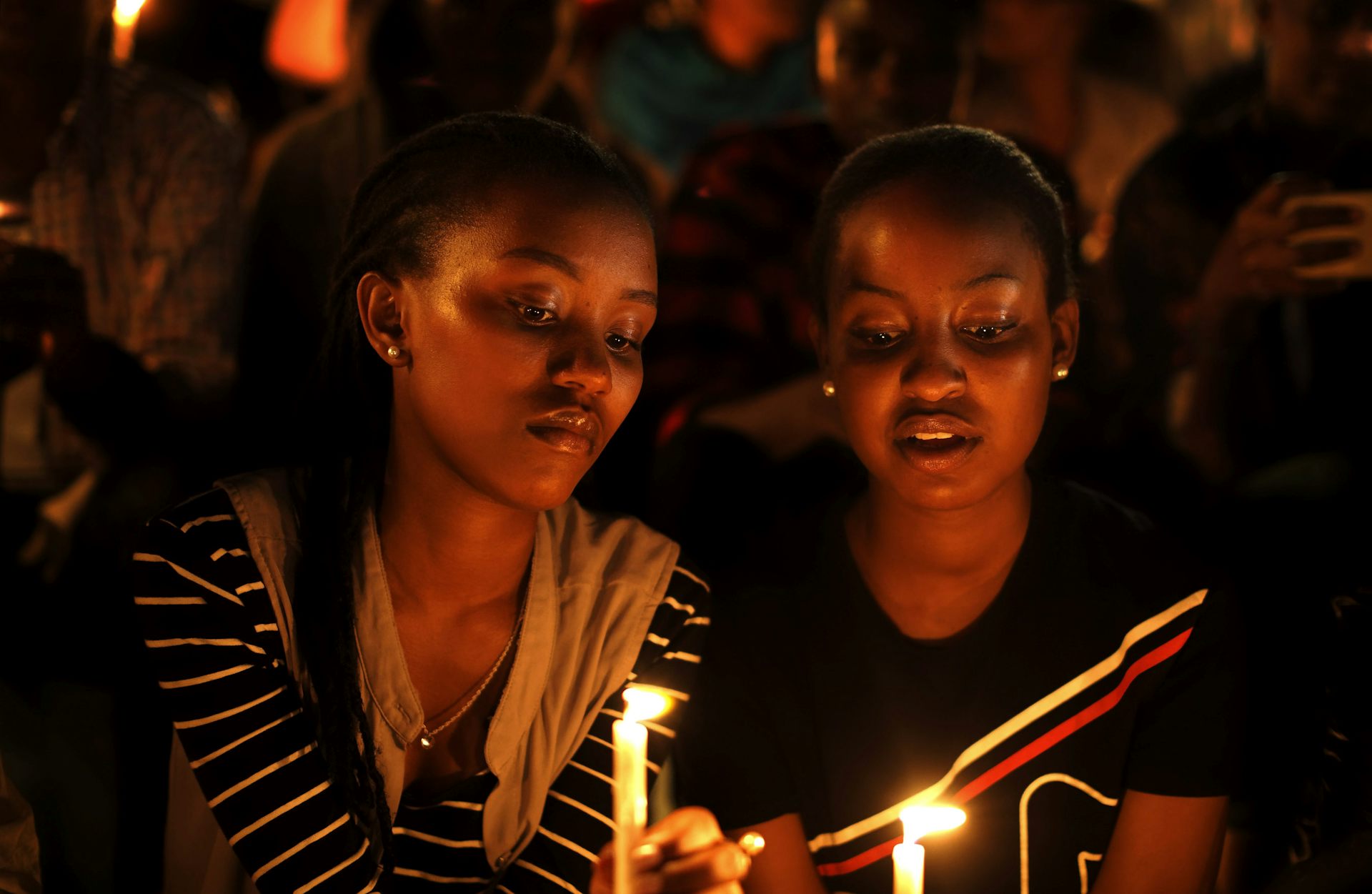(MENAFN- Asia Times) 2019 year marks the 25th anniversary of the Rwandan genocide and the 10th year since the brutal crushing of a Tamil insurgency in Sri Lanka. While the 1994 Rwandan genocide has become part of the world's collective memory, the 2009 Tamil atrocities have not.
Mullivailkkal Genocide Remembrance Day on May 18, named after the village that was the site of cataclysmic violence, is a day to remember those who died in the Sri Lankan conflict. Mullivailkal commemoration events have been taking place around the world this month.
However, 10 years and a series of United Nations reports and resolutions have made little progress toward truth, accountability or reparations for the survivors of atrocious crimes in Sri Lanka. Worryingly, the aftermath of the recent Easter Sunday bombings , the specter of ethnic violence has resurfaced.
At this tense time, the aftermath of the Rwandan genocide offers important lessons for Sri Lanka.
The gaping abyss
An estimated 800,000 Tutsis and politically moderate Hutu were killed in just 100 days in 1994. Thousands more were subjected to sexual violence and tortured in a systematic campaign by the Hutu ethnic majority.
Fifteen years later, another slaughter unfolded — this time in northern Sri Lanka. The protracted civil war between the national government and the Liberation Tigers of Tamil Eelam (LTTE) was coming to an end, the goal of an independent state for the minority Tamils slipping away.
Throughout the conflict, both sides abused human rights and ignored international humanitarian law. Unlawful killings and enforced disappearances carried out by the Sri Lankan security forces were daily occurrences . The LTTE was condemned for its suicide bombings and forcible recruitment of child soldiers.
For most of the 2000s, the LTTE was operating as a de facto state in the north and east. By early 2009, military action had crushed the LTTE's civil administration of these areas.
In a final showdown, the LTTE and an estimated 330,000 Tamil civilians were cornered on a small piece of land on the northeast coast in the Mullaithivu District. The government ordered the UN to evacuate their last few international workers from the region while international media were excluded and local journalists silenced .
Then the offensive was unleashed.
The death throes of LTTE
Transatlantic cellphone photos and a few video clips captured the unfolding annihilation. Hospitals on the front lines were systematically shelled , as were food distribution lines and even Red Cross ships attempting to evacuate the wounded .
Within months, the siege of the officially declared 'safe zone' and the indiscriminate shelling of Tamil civilians concentrated ended. The war was over. The Sri Lankan government celebrated its successful 'humanitarian rescue operation.' Others consider the brutal counter-insurgency campaign to have been genocidal.
By August 2009, Britain's Channel 4 News was broadcasting gruesome footage of summary executions and rape perpetrated by Sri Lankan soldiers. Dozens of surrendering Tamils, including senior Tiger political leaders and their families, had been shot dead by soldiers as they walked out of the safe zone hoisting white flags.
In 2012, the UN Secretary-General estimated that 40,000 civilians were killed over the final five months of the conflict. The exact number, as in many conflict situations, remains contested and is likely higher.
Once the conflict ended, hundreds of thousands of Tamils were interned in squalid camps in the northern Vanni region. Even today, thousands of Tamils remain displaced in their own country.
'War without witness'
The Rwandan genocide was a genocide foretold, yet no action was ever taken by the international community. The Tamil horrors were deliberately hidden; the combat was dubbed a ' war without witness .'
In both cases , the UN and the European Union had direct warnings but opted against taking action . The international community's inertia in Rwanda and Sri Lanka has been acknowledged as 'grave failures.'
The establishment of an international criminal tribunal was an explicit attempt to grapple with Rwanda's past. Convictions were secured in the cases of 61 'ringleaders.' A groundbreaking decision on sexual violence as an act of genocide was among its many rulings. Local ' gacaca courts ' conducted some two million trials. A truth commission continues efforts to promote reconciliation between the Hutu and Tutsi peoples.

<>
While highly imperfect, these transitional justice mechanisms have generated a record of what really happened and why it happened.
In contrast, Sri Lanka has repeatedly reneged on pledges to investigate and prosecute war-time atrocities. Abductions, torture in custody and sexual violence remain rampant amid a long history of failed promises .
Vengeance vs forgiveness
The harassment of Tamil activists, as well as targeted violence against the Muslim community, continue . Commitments to demilitarize and return occupied land are unfulfilled. Weak state structures, the lack of an independent judiciary and a culture of impunity remain significant obstacles .
As Harvard University scholar Martha Minow suggests, the relentless repetition of atrocity requires a pathway between 'too much forgetting' and 'too much memory;' between vengeance and forgiveness. In Sri Lanka today, memory and memorialization are radical counterpoints to official state narratives that resist accounting for the past.
"It happened," Holocaust survivor and noted author Primo Levi once said. "Therefore, it can happen again… it can happen everywhere.'
So long as impunity and the failure to address the root causes of atrocity crimes continue in Sri Lanka, lasting peace will remain elusive. Acknowledging the past must be a precondition to meaningful reconciliation.
A poem in the anthology by Sri Lankan poet Cheran In a Time of Burning evokes the challenge of closure in the wake of mass violence:
MENAFN1805201901590000ID1098537745
Legal Disclaimer:
MENAFN provides the information “as is” without warranty of any kind. We do not accept any responsibility or liability for the accuracy, content, images, videos, licenses, completeness, legality, or reliability of the information contained in this article. If you have any complaints or copyright issues related to this article, kindly contact the provider above.